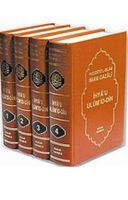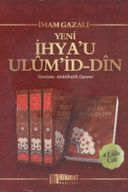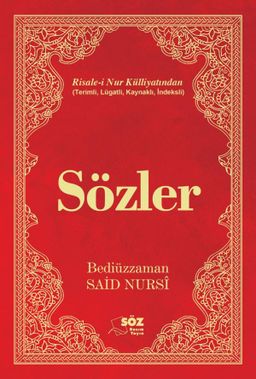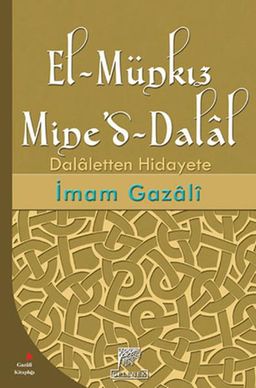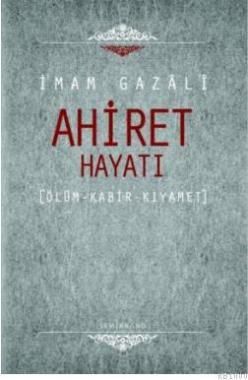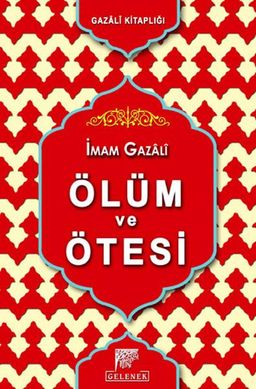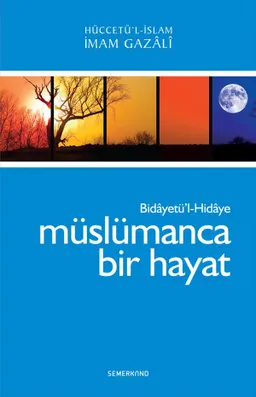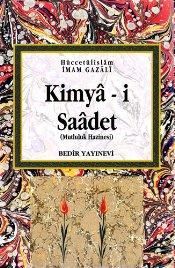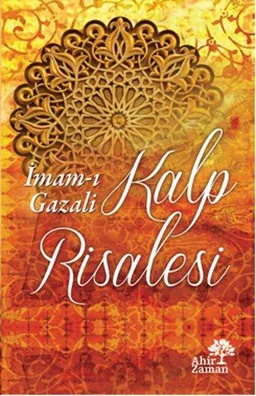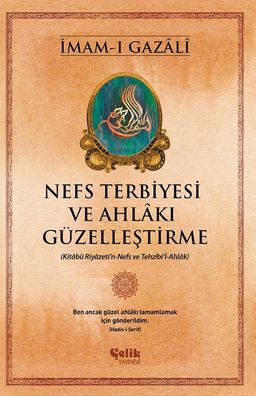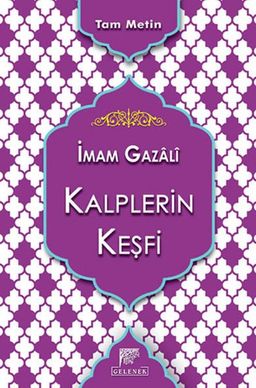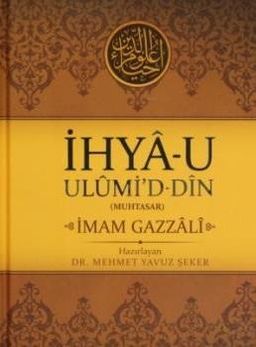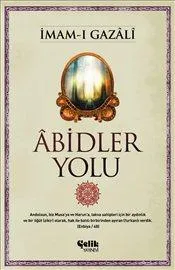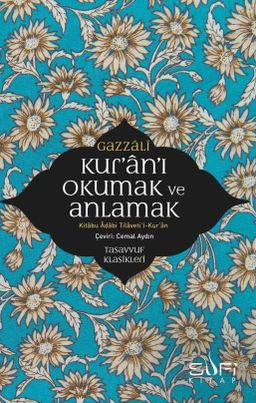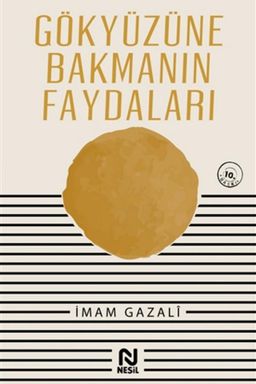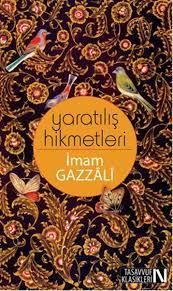İhya-u Ulumid-Din (4 Cilt Takım)
İmam GazaliAbout İhya-u Ulumid-Din (4 Cilt Takım)
İhya-u Ulumid-Din (4 Cilt Takım) subject, statistics, prices and more here.About
İhyau Ulumiddin tercümesi Yeni dizgi Gözden Geçirilmiş Yeni Baskı
(1) Bu eser, Îhyau Ulumi'd-Din in lâtin harfleriyle neşr edilmeğe başlanan ilk Türkçe tercümesidir. 1963 yılında, Ankara'da cüz cüz neşr edilmeğe başlanmıştır. Elinizdeki bu baskı, 1 inci cildin 3 üncü baskısıdır. Binaenaleyh Cumhuriyet devrinde İhyâ'yı tercüme ve neşirde öncülük şerefi mütercim Ahmed Serdaroğlu'na aittir.
(2) İhyâ'nın aslı 4 rub'dan (ruh* dörtte bir demektir), yâni dört ciltten müteşekkildir. Her ciltte 10 kitâb, tamâmında da 40 kitâb vardır. Yayınevimiz eserin bu Türkçe tercümesini, Arapça aslı gibi dört cilt olarak bastırmayı uygun görmüştür.
(3) Eserdeki hadîs-i şeriflerin kaynakları dip notlar hâlinde belirtilmiştir.
(4) İmâm Gazali hazretleri Şafiî mezhebine mensûb olduğu için, Hanefî mezhebine uymayan bâzı ictihadlar ve fıkıh hükümleri hakkında yeri geldikçe notlar konup izahat verilmiştir.
(5) Bu cildin sonuna, mevzu sırasına göre İçindekiler ilâve edilmiştir.
Alfabetik İsim Fihristi ise, 4 üncü cildin sonuna konacaktır.
(6) Tercümeye esâs tutulan Arabça metin 1306 târihinde, Mısır'da Meymeniyye Matbaası'nda basılan nüshanın metnidir
Cilt 1: Rub'u'l - İbâdât
Cilt 2: Rub'u'l - Âdât
Cilt 3: Rub'u'l - Mühlikât
Cilt 4: Rub'u'l - Münciyat
Author: İmam Gazali
Translator: Ahmet Serdaroğlu
Türler:
Estimated Reading Time: 135 hrs. 29 min.Page Number: 4782Publication Date: May 2019First Publication Date: 1975Publisher: Bedir YayınlarıISBN: 9786055657420Country: TürkiyeLanguage: Türkçe
Other Editions
İhyâ-u Ulumi'd-Din (4 Cilt Takım)
563 okunmaHuzur Yayınevi · 2012 · 3600 syf
İhyâ-u Ulûmi'd-Dîn (8 Cilt Takım)
438 okunmaÇelik Yayınları · August 2020 · 6548 syf
İhyâu' Ulûmi'd- Dîn (4 Cilt Takım)
75 okunmaKaraoğlu Yayınları · 1997 · 4574 syf
İhyau Ulumi'd-Din Tercümesi (8 Cilt Takım)
70 okunmaErkam Yayınları · August 2019 · 5917 syf
İhyâu Ulûmi'd Dîn (8 Cilt Takım)
42 okunmaAkit Yayınevi · 1992 · 3559 syf
İhya-u Ulumi'd-Din (4 Cilt Takım)
35 okunmaMerve Yayınları · 2000 · 4204 syf
İhyâu Ulûmi’d-Dîn (4 Cilt Takım)
22 okunmaBedir Yayınları · 2016 · 4782 syf
İhya-u Ulumi'd-Din (4 Cilt Takım)
21 okunmaPırlanta Yayınevi · 1981 · 4212 syf
İhyaü Ulümid Din (4 Cilt Takım)
21 okunmaDiyanet İşleri Başkanlığı Yayınları · October 2020 · 2579 syf
İhyau Ulumi'd-Din (4 Cilt Takım)
20 okunmaHikmet Neşriyat · 2012 · 2248 syf
İhyâ-u Ulûmi’d-Dîn (8 Cilt Takım)
20 okunmaHisar Yayınevi · December 2016 · 4846 syf
İhyau Ulumi'd Din (4 Cilt Takım )
19 okunmaBedir Yayınları · January 2019 · 4782 syf
İhyaü Ulumi'd-Din (11 Kitap set)
16 okunmaSemerkand Yayıncılık · September 2019 · 1852 syf
İhyau Ulumid'd-Din Tercümesi (8 Cilt Takım)
11 okunmaErkam Yayınları · 29 July 2016 · 5917 syf
İhya-i Ulûm'id Din (10 Cilt Takım)
11 okunmaArslan Yayınları / Yaylacık Matbaası · 1981 · 6069 syf
Book Statistics
All statistics
Statistics of this edition
Reader Profile of the Book
Kadın% 50.3
Erkek% 49.7
0-12 Yaş
13-17 Yaş
18-24 Yaş
25-34 Yaş
35-44 Yaş
45-54 Yaş
55-64 Yaş
65+ Yaş
About the Author
İmam GazaliYazar · 302 books
This text has been automatically translated from Turkish. Show Original
Gazzâlî (Persian: الغزّالی) (b. 1058, Tus - d. 18 December 1111, Tus), Islamic scholar, philosopher, mystic and professor of the Great Seljuk State period. The nicknames of Gazzâlî, who is thought to be of Persian origin, are Hüccetü'l-İslâm and Zeynüddîn. He is generally known by the names Gazzâlî and İmam-ı Gazzâlî.
Ghazali was born in Tus, Khorasan, in 450 Hijri (1058 Gregorian). He received his primary education from Ahmed bin Muhammed er-Razikânî in Tus, then he went to the city of Curcan and received education from Ebû Nasr el-İsmailî, and then he studied at Nishapur Nizamiye Madrasa until the age of 28. As a theological thought, he was educated by Ebu Nasr al-Ismaili. He was influenced by Hasan Ash'ari and Shafi'i in terms of practical views. When his teacher Abdülmelik el-Cüveynî, nicknamed Imam-ı Harameyn, died in 1085, he went to Nishapur to the vizier of the Great Seljuk State, Nizamülmülk. Proving his superiority over other scholars with the answers he gave in a meeting in the presence of Nizam al-Mulk, he was appointed as the chief professor of the Nizamiye Madrasa in Baghdad in 1091. Here, he quickly gained fame and respect with his knowledge and the student community he acquired. He turned to Sufism and concentrated on this field under the influence of Ebû Alî Farmedî. With this interest and his desire for pilgrimage, he left his duty at the madrasah, left Baghdad in 1095 and went to Damascus. After staying in Damascus for two years, he went on pilgrimage in 1097.
After the pilgrimage, he returned to Damascus and from there he went to Tus via Baghdad. During his stay in Damascus and Tus, he lived a private life and progressed in the field of Sufism. Eleven years after his departure from Baghdad, in 1106, upon the request of Nizamülmülk's son Fahrülmülk, he started to give education again in Nishapur Nizamiye Madrasa. After a short time, he returned to Tus and lived a Sufi life with his disciples in the lodge he had built. Ghazali died in 1111 (Hijri 505) in his birthplace, Tus, Iran.
During the time when Ghazali lived, there was a great political and intellectual chaos in the Islamic world. Although the power of the Abbasid caliphs in Baghdad was weakening, the borders of the Great Seljuk State were expanding and its influence was increasing. Melikşah's vizier, Nizamülmülk, was gaining victories in the battlefields and opening discussion environments called scientific assemblies and madrasahs. During this period, the Shiite-Fatimid dynasty was on the throne of Egypt. In Europe, the Andalusian Umayyad State was in decline.
The first Crusade was also carried out during the reign of Gazzali. When Gazzali was 40 years old, Antakya was besieged by the crusaders and a year later Jerusalem was captured. Hasan Sabbah and Ömer Hayyam are also well-known people who lived in the same age as Gazzali. An intellectual collapse completed this confusion in the Islamic world.
Ghazali's curiosity for learning caused him to research many religious and intellectual movements. He saw that during his time, people who wanted to find the truth were divided into four groups, and each of them sought the truth in their own way. These; philosophers, theologians, Sufis, esotericists. By examining all of their opinions; He criticized theology, philosophy and the path of Batinism in detail in his books and turned to Sufism, the path of the Sufis, and sought the truth on this path.
Books
Dil Belası
9.4/10
Kalplerin Keşfi
9.4/10
El-Münkız Mine'd-Dalal Dalale...
9.3/10
Ey Oğul
9.4/10
Ölüm ve Ötesi
9/10
İhya-u Ulumi'd-Din (Muhtasar )
9.5/10
İhyâ-u Ulumi'd-Din (4 Cilt Tak...
9.5/10
Abidler Yolu
9.2/10
Kimyâ-i Saâdet (Cilt 1 - 2)
9.2/10
Müslümanca Bir Hayat
9.3/10
Kur'an'ı Okumak ve Anlamak
9.4/10
Kalp Risalesi
9.4/10
Gökyüzüne Bakmanın Faydaları
9/10
Yaratılış Hikmetleri
8.8/10
Mişkatu'l Envar Nurlar Alemi
9.2/10
